Shiratama Dango is a popular Japanese dumpling known for its smooth, soft, and sticky texture. It is often enjoyed with sweet toppings and serves as a staple ingredient in various sweets because its mild flavor doesn't interfere with other ingredients.
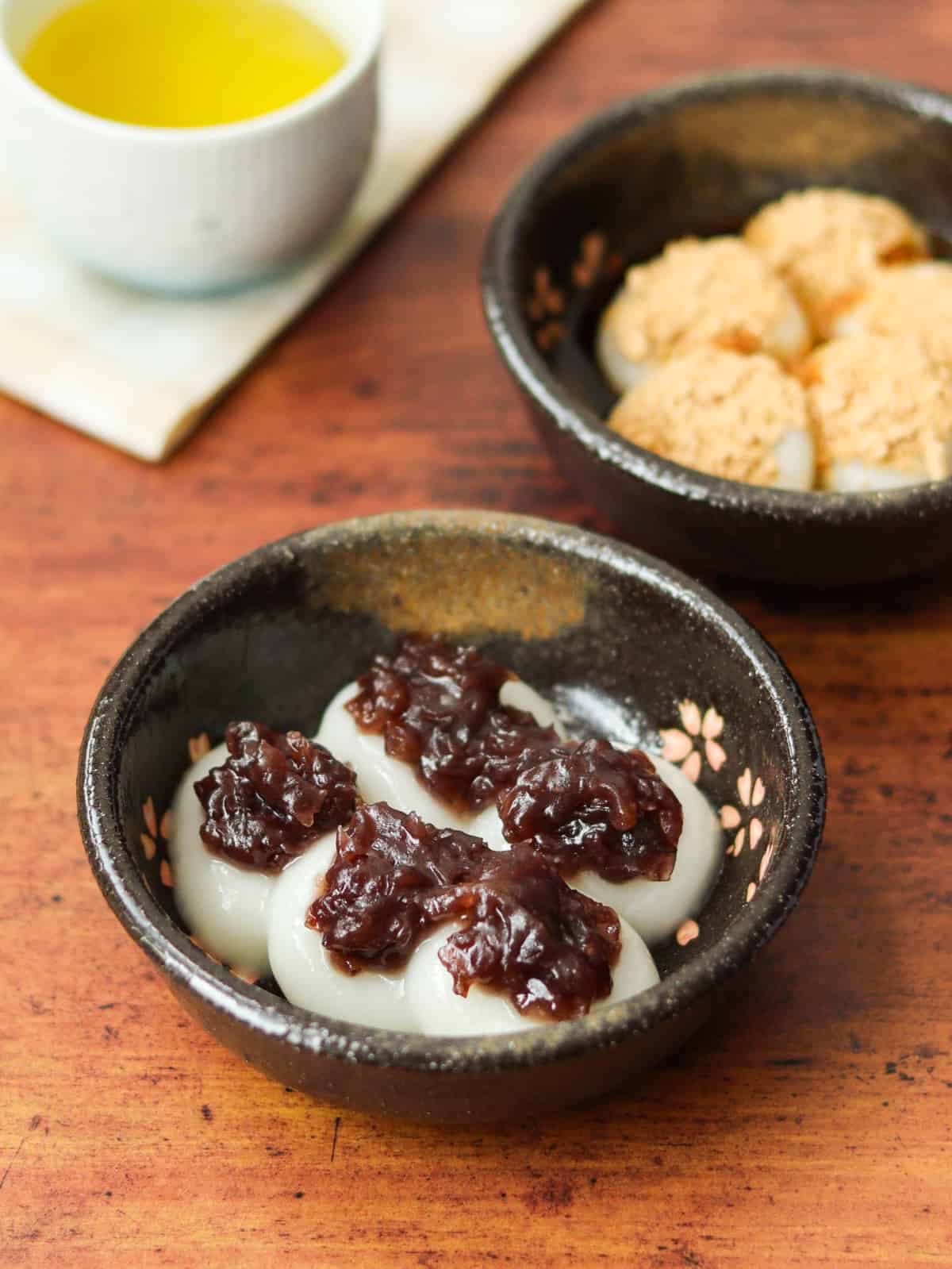
Jump to:
What is Shiratama Dango?
Shiratama Dango is a Japanese dumpling made by combining shiratamako, a type of rice flour, with water and kneading it into a dumpling shape before boiling. "Shiratama" means white balls, and "Dango" refers to rice dumplings. It has a soft, stretchy, and sticky texture, but since it has almost no taste, it is typically served with anko (red bean paste), kinako (roasted soybean flour), or kuromitsu (brown sugar syrup) as a traditional Japanese sweet.
In addition to shiratamako, other types of rice flour, such as joshinko, mochiko, and dangoko, are used to make dango (Japanese dumplings). However, when making shiratama dango, only shiratamako should be used. Dango made with other rice flour is not considered 'shiratama' dango. Using alternative types of rice flour results in a different texture, so be sure not to confuse the ingredients.
Sweets made with shiratama dango
Since shiratama dango is known for its delightful texture, it is also commonly used as a topping in various sweets in Japan, including:
- Anmitsu (a sweet that includes agar agar jelly, fruit, and sweet toppings)
- Mitsumame (a sweet made with boiled beans, agar jelly, and fruit)
- Zenzai (sweet red bean soup)
- Ice cream
All of these are popular sweets that incorporate shiratama dango. In addition to these, it also pairs well with pudding and chocolate. After trying this recipe, you might find it interesting to combine shiratama dango with local sweets in your area.
Methods to maintain the texture over time
Shiratama dango is less likely to become hard compared to other types of dango, but its texture still deteriorates over time. While you can restore its original texture by reheating it in a microwave, it will not be suitable if you want to eat it in a cold state. Therefore, in Japan, the following two methods are occasionally used to maintain the texture over time.
One method is to add sugar during the kneading process. Knead the dough by incorporating sugar and water equal to 20% of the weight of the shiratamako.
Another method is to use silken tofu instead of water. Add 10% more silken tofu in place of water.
Both sugar and silken tofu have high water retention properties, slowing down the degradation of starch. This ensures that the dango remains smooth, soft, and sticky in texture even as time passes.
However, using either method will affect the taste of the dango. Therefore, it is generally recommended to consume it on the same day it is made, without employing these methods.
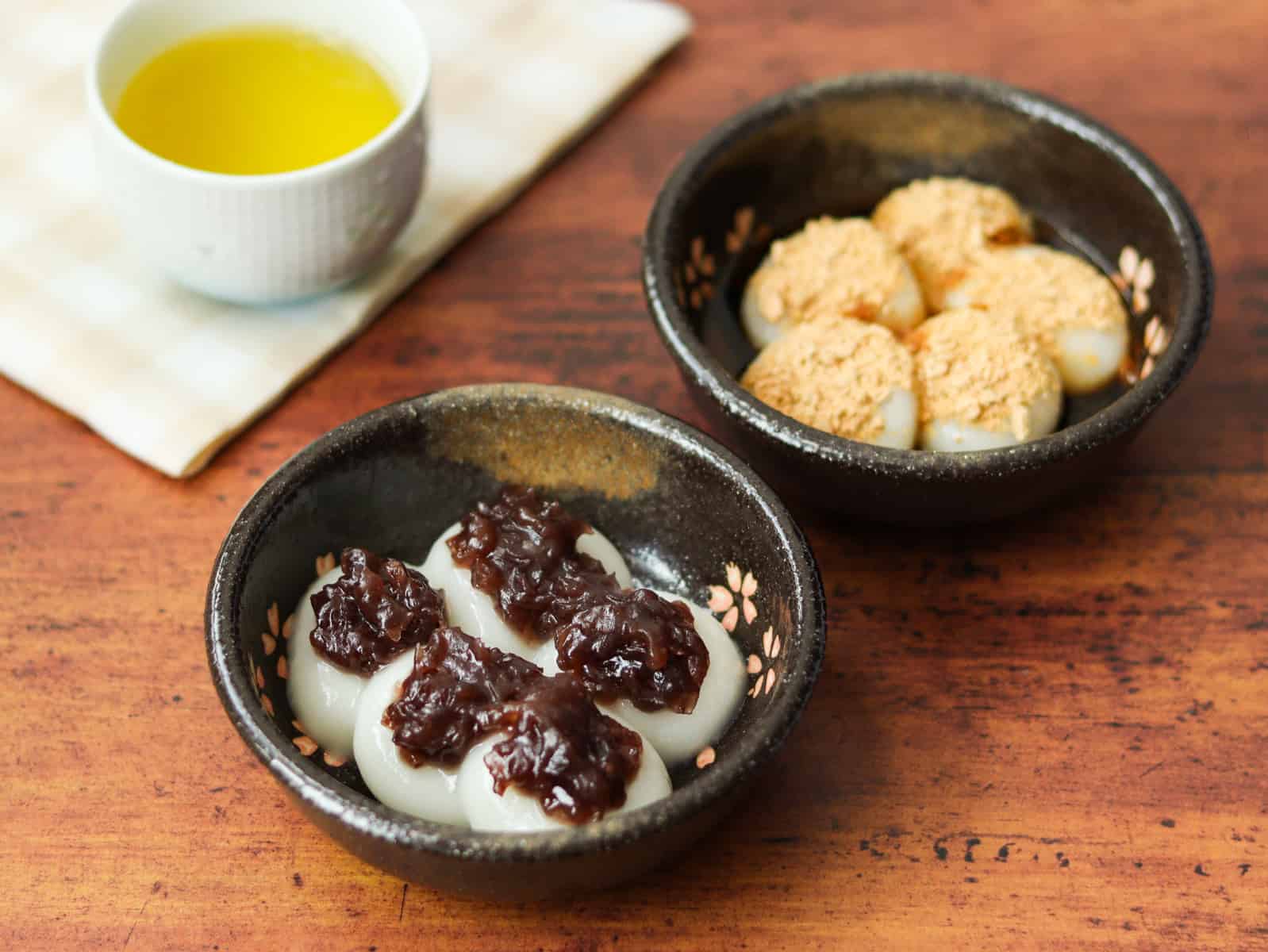
Ingredients
- 3.7 oz shiratamako (白玉粉)
- ⅖ cup water
Toppings (optional):
- 3 Tbsp anko (red bean paste)
- 1 Tbsp kinako (roasted soybean flour)
- ½ Tbsp kuromitsu (brown sugar syrup)
Step-by-step instructions
🕒 Total 30 mins
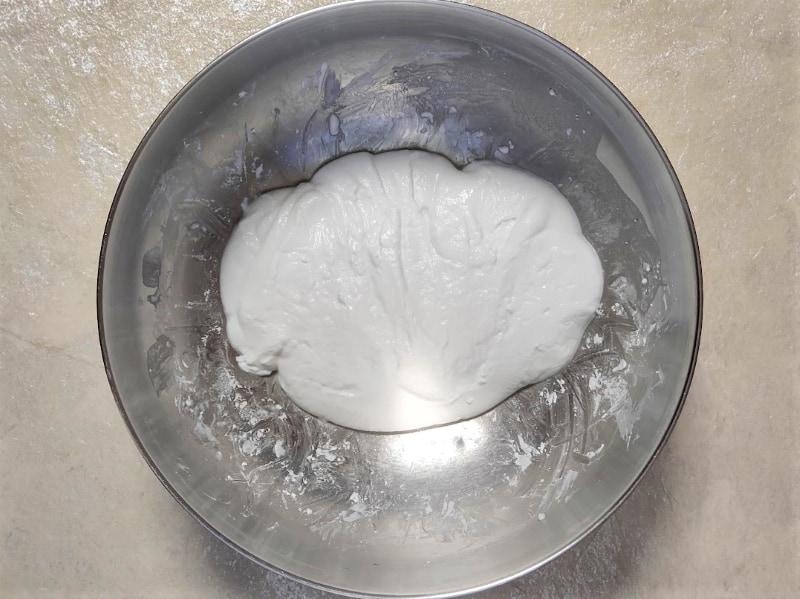
Step 1
Put the shiratamako in a bowl and knead while gradually adding water. If the dough doesn't come together, add a small amount of water (about ½ Tbsp) and continue adjusting until the dough comes together properly.
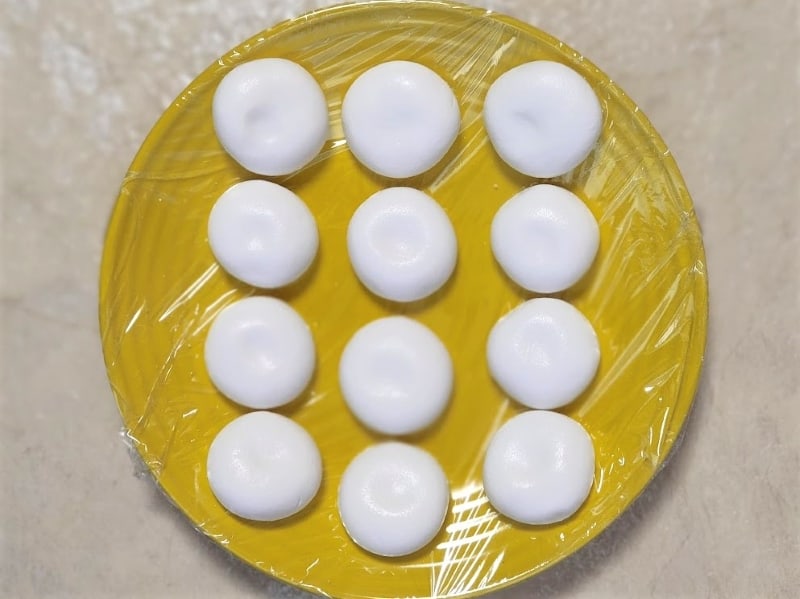
Step 2
Once the dough reaches a soft, earlobe-like consistency through kneading, shape it into dumplings that are around 0.58 oz (16.5g) each, rolling the dough between your palms. Then, make a small concave in the center of each dumpling with your finger.
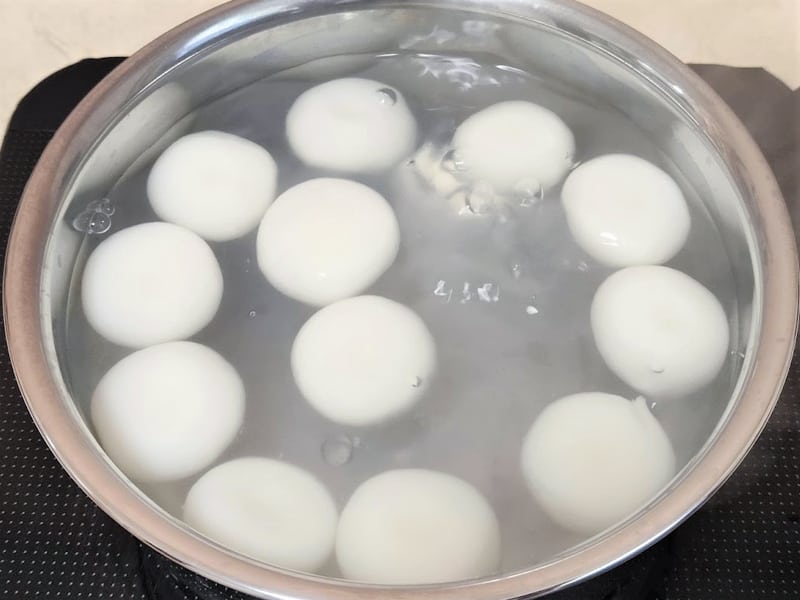
Step 3
Fill a pot with plenty of water and bring it to a boil. When it comes to a boil, add the dumpling dough to the pot and boil it over medium heat for about 4 minutes until it rises to the surface. After all the dumpling dough floats to the surface, continue boiling for a few more minutes.
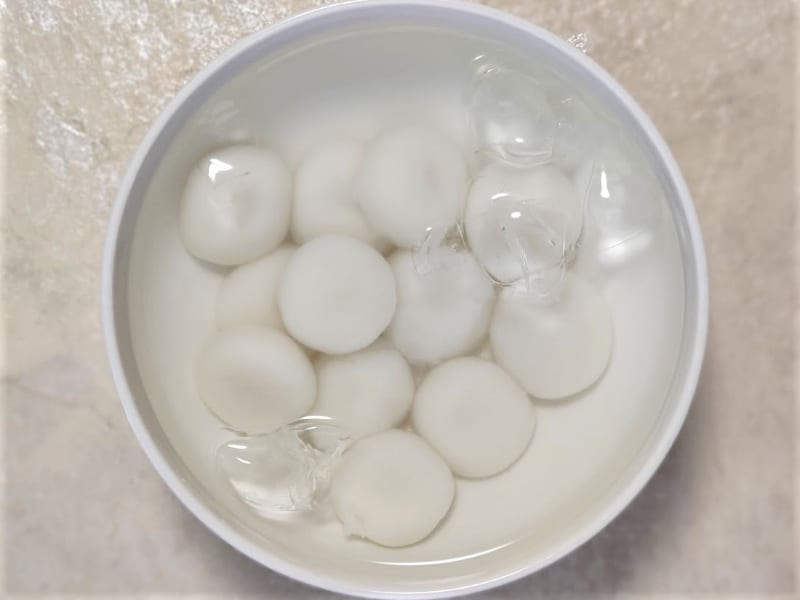
Step 4
Fill a bowl with ice water or cold water. Transfer the boiled dumplings to the bowl and let them cool for about 5 minutes.

Step 5
Drain the dumplings in a sieve and serve them in bowls, topped with anko, kinako, or kuromitsu to taste.
To Store
You can store it in the refrigerator for up to 2 days. However, it is recommended to enjoy the dish on the same day it is made, as it will lose its texture over time. There are also methods to prevent it from changing in texture over time.
Tips on how to make
- When preparing the dough, be careful not to add too much water. Excessive water can prevent the dough from holding together properly. Even if you think there is not enough water, be sure to add it in small amounts.
- Form the dough into a slightly concave shape in the center. This makes it easier for the dumpling to cook evenly.
- Boil the dough slowly over medium heat. This will give the dumpling a soft texture.
Recipe Card
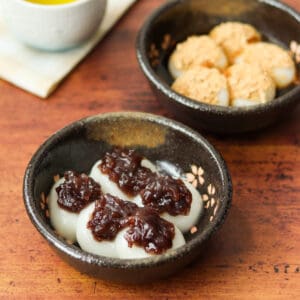
Shiratama Dango
Ingredients
- 3.7 oz shiratamako (白玉粉)
- ⅖ cup water
Toppings (optional):
- 3 Tbsp anko (red bean paste)
- 1 Tbsp kinako (roasted soybean flour)
- ½ Tbsp kuromitsu (brown sugar syrup)
Instructions
- Put the shiratamako and sugar in a bowl and knead the mixture while gradually adding water. If the dough doesn't come together, add a small amount of water (about ½ Tbsp) and continue adjusting until the dough comes together properly.
- Once the dough reaches a soft, earlobe-like consistency through kneading, shape it into dumplings that are around 0.58 oz (16.5g) each, rolling the dough between your palms. Then, make a small concave in the center of each dumpling with your finger.
- Fill a pot with plenty of water and bring it to a boil. When it comes to a boil, add the dumpling dough to the pot and boil it over medium heat for about 4 minutes until it rises to the surface. After all the dumpling dough floats to the surface, continue boiling for a few more minutes.
- Fill a bowl with ice water or cold water. Transfer the boiled dumplings to the bowl and let them cool for about 5 minutes.
- Drain the dumplings in a sieve and serve them in bowls, topped with anko, kinako, or kuromitsu to taste.
Notes
- You can store it in the refrigerator for up to 2 days. However, it is recommended to enjoy the dish on the same day it is made, as it will lose its texture over time. There are also methods to prevent it from changing in texture over time.


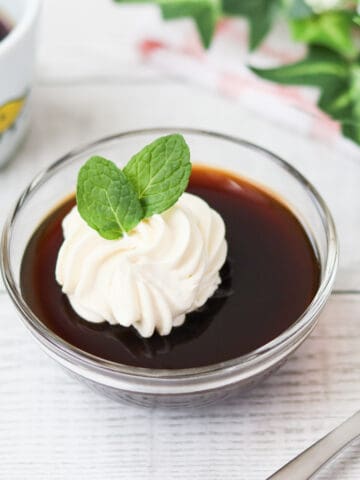
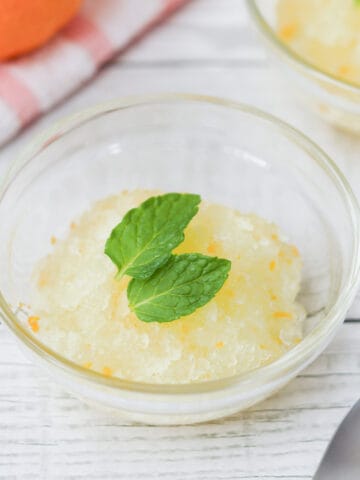
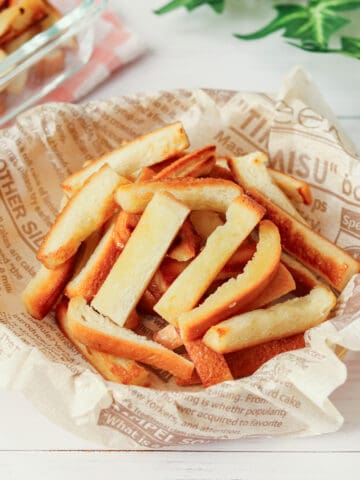
Leave a Reply